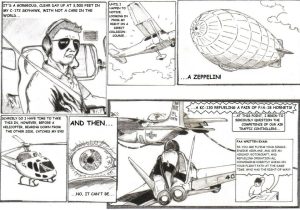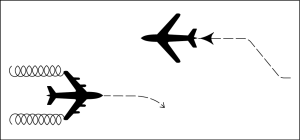Today’s post is inspired by a cartoon from flight instructor Mark Rowe.

However unlikely you would encounter this scenario in real life, these overtly specific rules are in place to guarantee safety for all aviators. Let’s take a look at the specifics, which are detailed in our 2015 Private Pilot Test Prep:
An aircraft in distress has the right-of-way over all other air traffic. When aircraft of the same category are converging at approximately the same altitude (except head-on, or nearly so), the aircraft on the other’s right has the right-of-way.

If the aircraft are of different categories, the following applies:
1. A balloon has the right-of-way over any other category of aircraft;
2. A glider has the right-of-way over an airship, airplane, rotorcraft, weight-shift control, or powered parachute; and
3. An airship has the right-of-way over an airplane, rotorcraft, weight-shift control, or powered parachute.
An aircraft towing or refueling other aircraft has the right-of-way over all other engine driven aircraft.
When aircraft are approaching each other head-on, or nearly so, each pilot of each aircraft (regardless of category), shall alter course to the right.

An aircraft being overtaken has the right-of-way. The overtaking aircraft shall alter course to the right to pass well clear.

When two or more aircraft are approaching an airport for landing, the aircraft at the lower altitude has the right-of-way, but it shall not take advantage of this rule to cut in front of, or overtake another aircraft.
Having known from childhood that he would be a pilot one day, Mark Rowe is a 2014 graduate of LeTourneau University’s Aeronautical Science program. He holds his CMEL, CSEL, CFI, and A&P certificates, and currently works as a flight instructor with Maine Instrument Flight. When he’s not telling students to use more right rudder, he enjoys drawing airplanes and other things.




